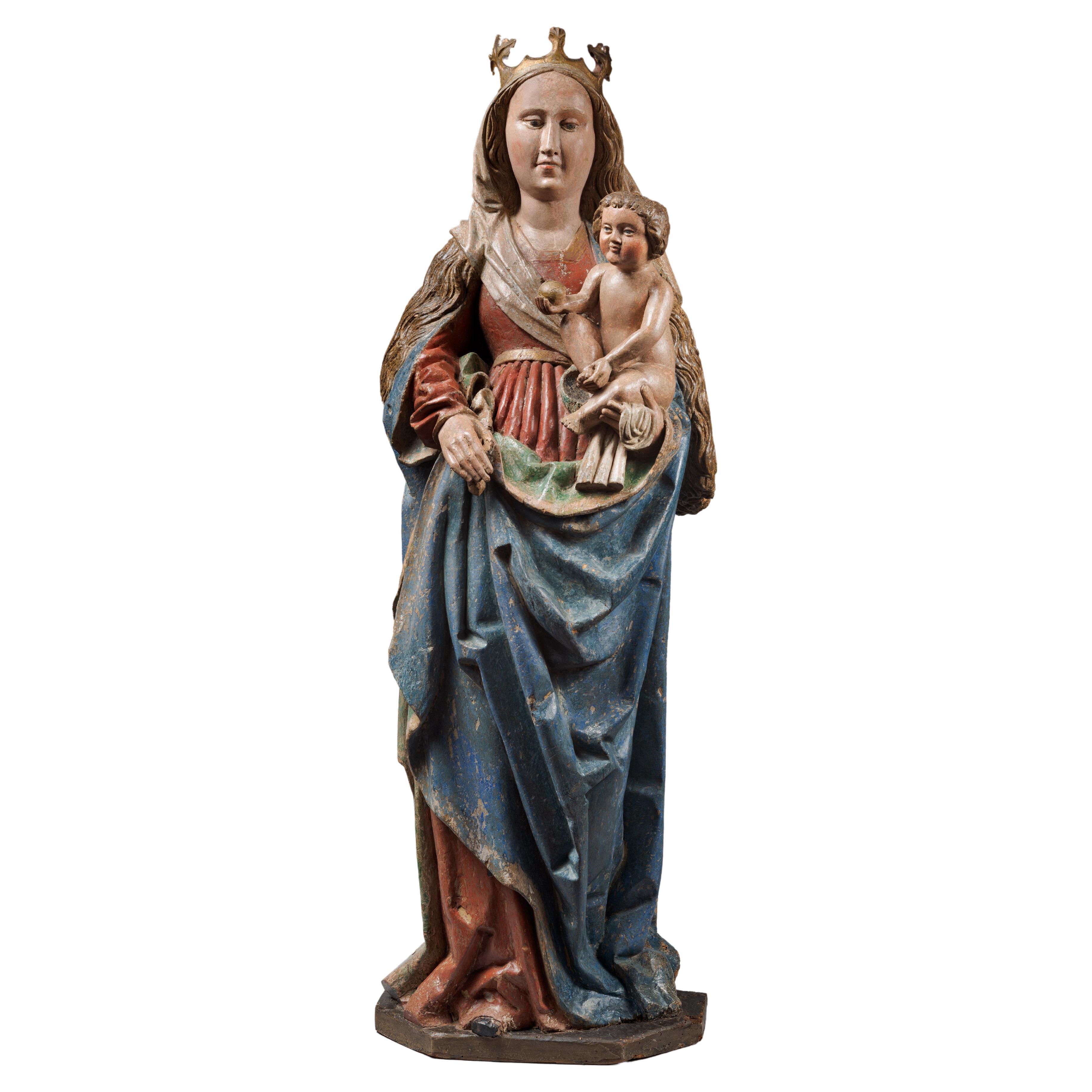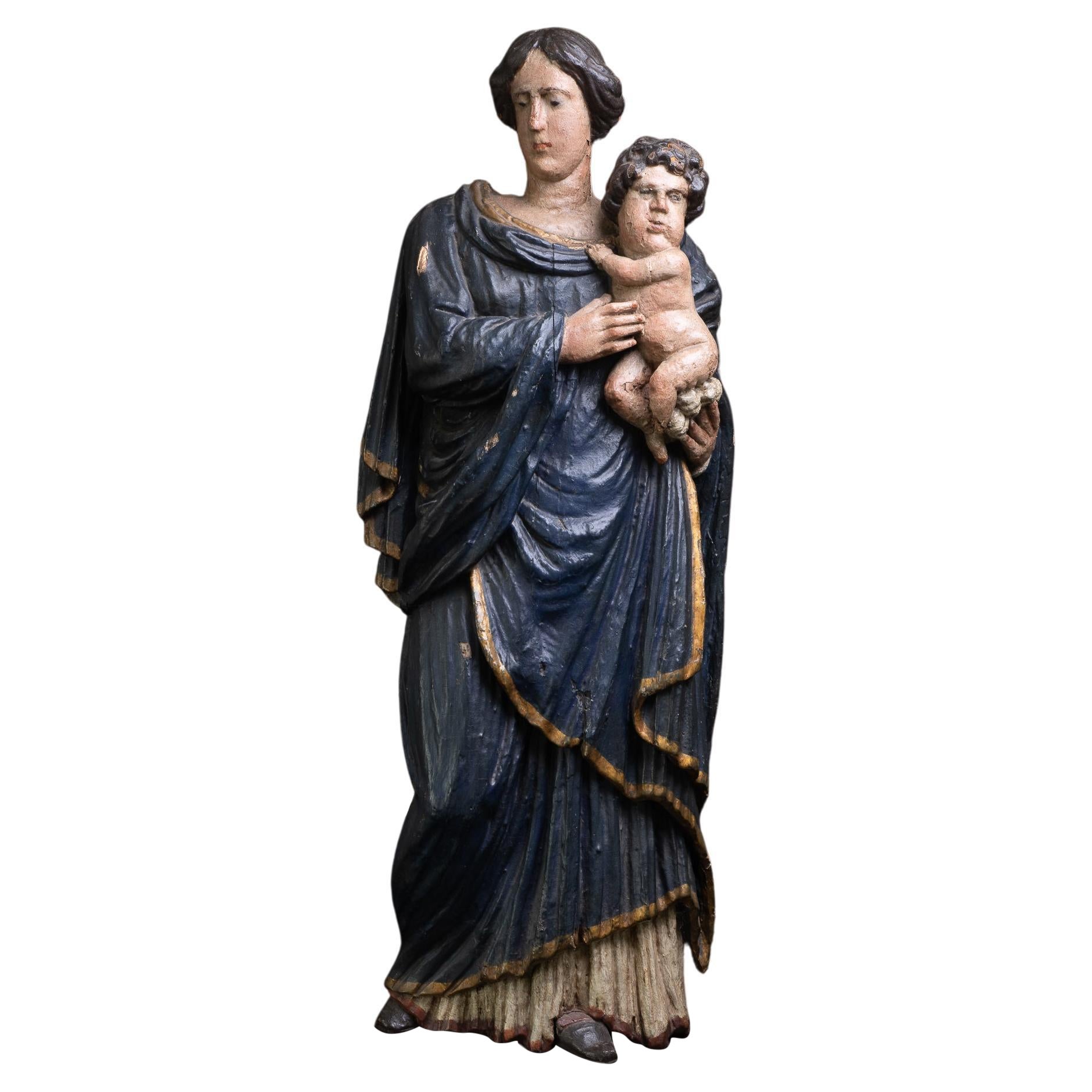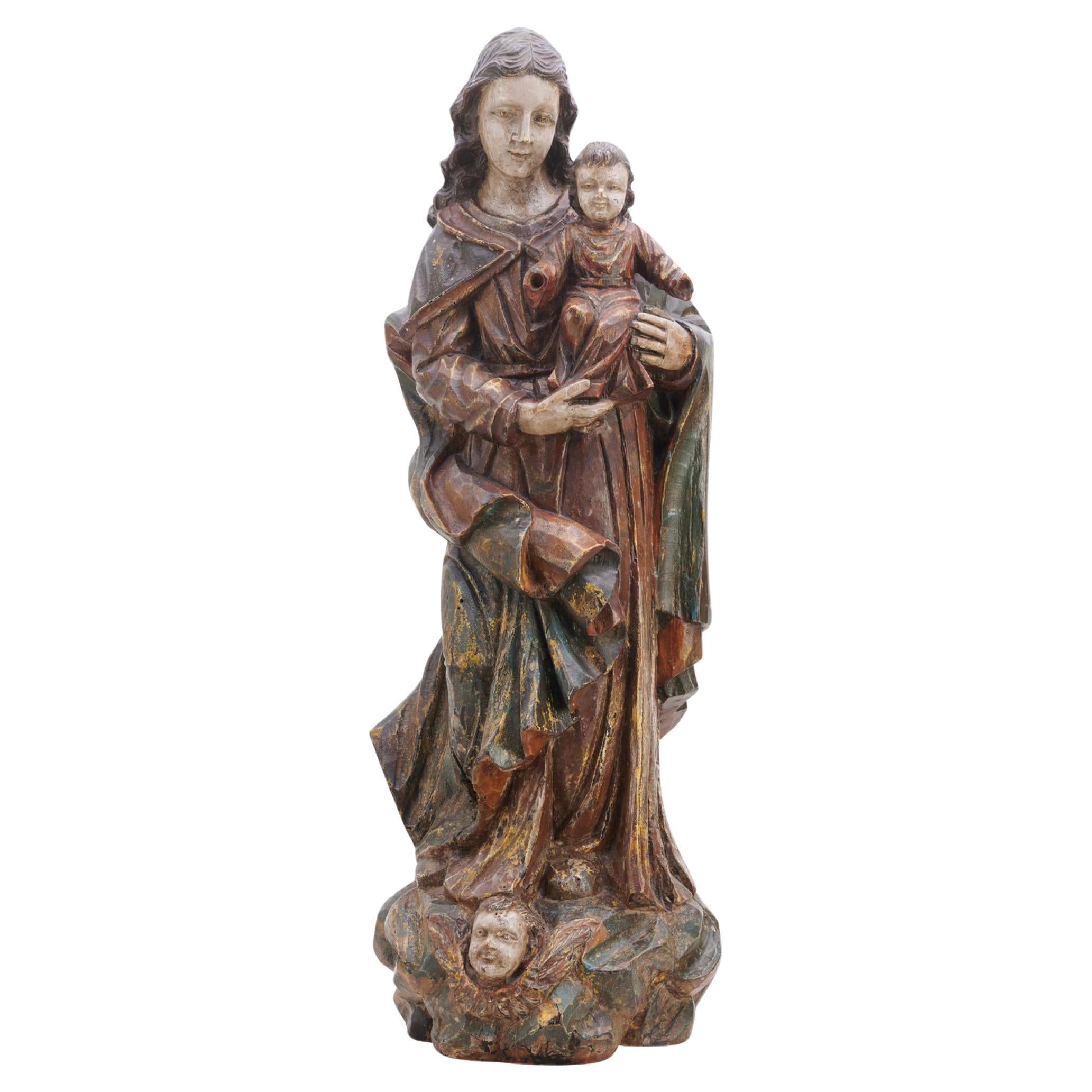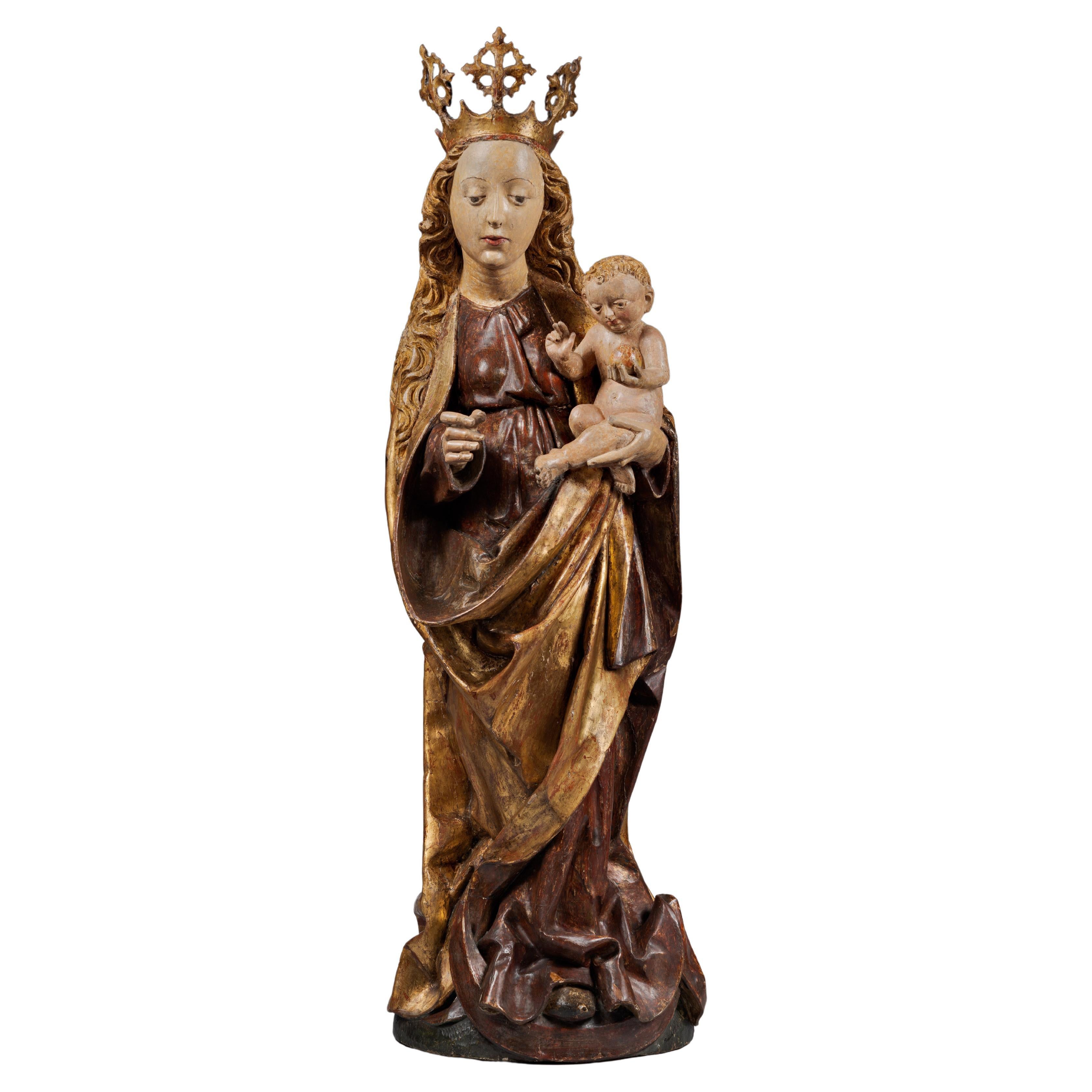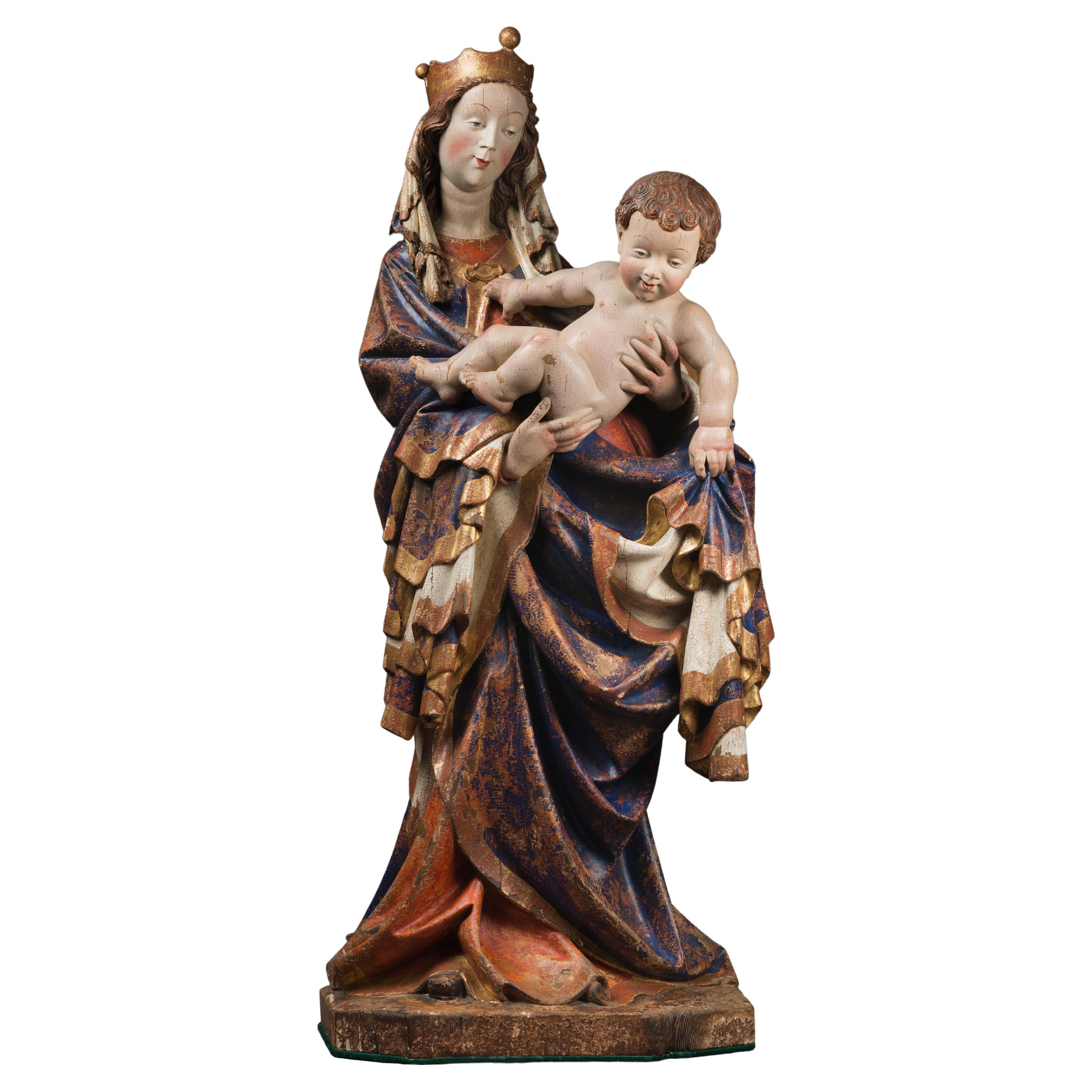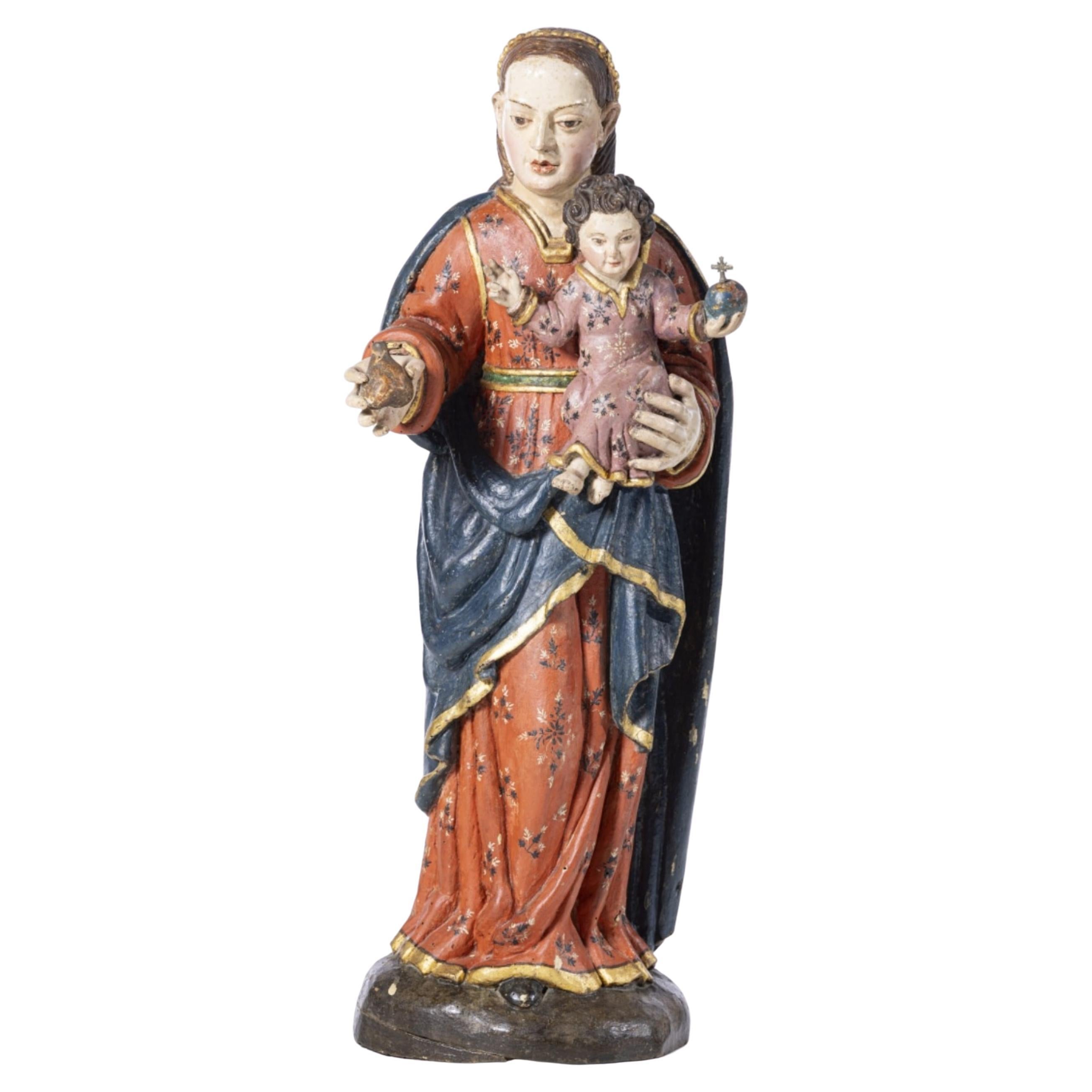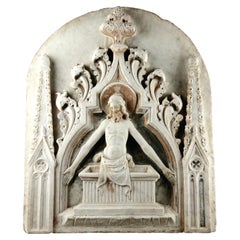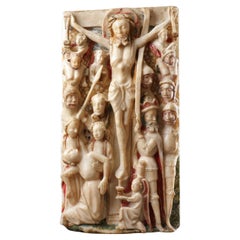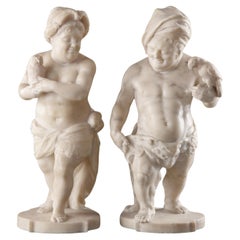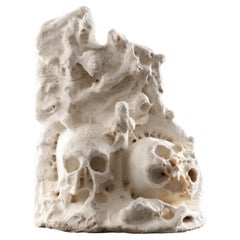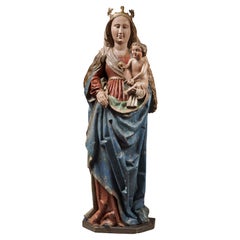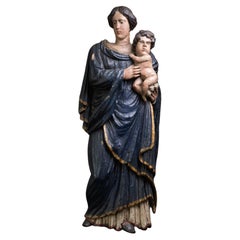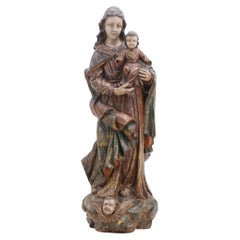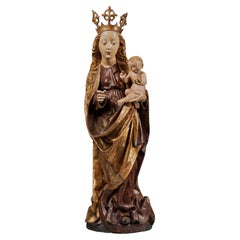Items Similar to A Polychrome and Parcel-Gilt Marble Group of the Virgin and Child
Want more images or videos?
Request additional images or videos from the seller
1 of 11
A Polychrome and Parcel-Gilt Marble Group of the Virgin and Child
$150,000
£113,799.11
€130,477.33
CA$213,683.93
A$231,899.65
CHF 122,015.66
MX$2,817,587.11
NOK 1,527,613.05
SEK 1,438,386.66
DKK 974,215.41
About the Item
A Polychrome and Parcel-Gilt Marble Group of the Virgin
and Child
Attributed to Giovanni Di Balduccio (1317 - 1349)
Marble
Italy
Circa 1330 - 1340
SIZE: 65cm high, 28cm wide - 25½ ins high, 11 ins wide
PROVENANCE:
Possibly Trivolzio Collection, Milan
With Piero Tozzi Inc., New York
Acquired by the William Randolph Hearst Foundation for The Los Angeles County Museum (A.5832.47-42), 1947
An auction of property de-accessioned by the Los Angeles County Museum of Art to benefit new acquisitions; Sotheby's, Los Angeles, 21-23 June 1982, lot 161
Ex Private collection
Literature:
W.R. Valentiner, Art Quarterly, Winter, 1947
La Critica d'Arte, no. 27, May 1949, p. 74
W. R. Valentiner, Gothic and Renaissance Sculpture In the Collection of the Los Angeles County Museum: Catalogue and Guide, Los Angeles, 1951, p. 60, pl. 21
NOTE:
Inscribed 832.47-42 in black ink to the reverse
- Dimensions:Height: 25.5 in (64.77 cm)Width: 11 in (27.94 cm)Depth: 6 in (15.24 cm)
- Materials and Techniques:
- Place of Origin:
- Period:
- Date of Manufacture:Circa 1330 - 1340
- Condition:Wear consistent with age and use.
- Seller Location:London, GB
- Reference Number:1stDibs: LU9363236851882
About the Seller
No Reviews Yet
Recognized Seller
These prestigious sellers are industry leaders and represent the highest echelon for item quality and design.
Established in 1989
1stDibs seller since 2023
Typical response time: <1 hour
- ShippingRetrieving quote...Shipping from: London, United Kingdom
- Return Policy
Authenticity Guarantee
In the unlikely event there’s an issue with an item’s authenticity, contact us within 1 year for a full refund. DetailsMoney-Back Guarantee
If your item is not as described, is damaged in transit, or does not arrive, contact us within 7 days for a full refund. Details24-Hour Cancellation
You have a 24-hour grace period in which to reconsider your purchase, with no questions asked.Vetted Professional Sellers
Our world-class sellers must adhere to strict standards for service and quality, maintaining the integrity of our listings.Price-Match Guarantee
If you find that a seller listed the same item for a lower price elsewhere, we’ll match it.Trusted Global Delivery
Our best-in-class carrier network provides specialized shipping options worldwide, including custom delivery.More From This Seller
View AllA Very Rare and Important Marble Relief of the ‘Resurrection of Christ’
Located in London, GB
A Very Rare and Important Marble Relief of the ‘Resurrection of Christ’
Attributed to the Master of the Mascoli Altar
Marble
Venice, Italy
Second half of the 15th Century
SIZE: ...
Category
Antique 15th Century and Earlier Italian Renaissance Figurative Sculptures
Materials
Marble
Alabaster Crucifixion from a Retable of the Passion
Located in London, GB
A Very Fine Carved Relief of the Crucifixion
Alabaster
Circa 1450 - 1470
Nottingham, Midlands, England
Size: 49.5cm high, 26.5cm wide, 5cm deep - 19½ ins high, 10½ ins wide, 2 ins ...
Category
Antique 15th Century and Earlier English Sculptures and Carvings
Materials
Alabaster
A Superb Pair of Neapolitan Carved Figures of Dwarves
By Francesco Celebrano
Located in London, GB
A Superb Pair of Neapolitan Carved Figures of Dwarves
Attributed to Francesco Celebrano (1729 - 1814)
Marble
Naples, Italy
18th Century
SIZE: Male: 36cm high - 14¼ ins high
Fe...
Category
Antique Late 18th Century Italian Figurative Sculptures
Materials
Marble
An Unusual and Rare English ‘Memento Mori’ Carved Shrine with Two Human Skulls
Located in London, GB
An Unusual and Rare English ‘Memento Mori’ Carved Shrine with Two Human Skulls to the underside, a carved ‘Dragonfly’
Marble
16th / 17th Century
England
Size: 36cm high, 28cm w...
Category
Antique 16th Century English Figurative Sculptures
Materials
Marble
A Rare and Finely Carved Weser Renaissance Stone Head
Located in London, GB
A Rare and Finely Carved Weser Renaissance Stone Head
Stone
Germany
16th Century
Size: 23cm high, 21cm wide, 21cm deep - 9 ins high, 8¼ ins wide, 8¼ ins deep / 33cm high ...
Category
Antique 16th Century German Architectural Elements
Materials
Stone
A Set of Four Tuscan Carved Wood and Parcel Gilt Equestrian Reliefs
Located in London, GB
A Set of Four Tuscan Carved Wood and Parcel Gilt Equestrian Reliefs
Walnut, gilt, velvet
Italy
Circa 1580
SIZE: two reliefs: 25cm high, 48cm wide - 9¾ ins high, 19 ins wide
two...
Category
Antique 16th Century Italian Wall-mounted Sculptures
Materials
Velvet, Walnut
You May Also Like
Important 15th Century Polychrome Wood Virgin and Child
Located in Saint-Ouen, FR
Important 15th century polychrome wood virgin and child
Origin: Southern Germany
Period: Late 15th Century, Ca. 1480-1490
Height : 125 cm
Polychrome limewood
Good condition
Provenance : Private collection, Alsace, France.
As soon as 1430, sculpture starts a major and deep stylistic evolution than will unfold over a century, until around 1530. We call it the International Gothic. This production is particularly interested in a quest for realism.
This important Virgin and Child wears a long red dress with a round gilded neckline. A delicate golden belt...
Category
Antique 15th Century and Earlier Figurative Sculptures
Materials
Wood
18th C, Southern France, Madonna and Child, Carved and Polychrome Wood
Located in Leuven , BE
Although the 18th century, the period of the Enlightenment in France, spawned thinkers who criticised the privileges of the clergy and the truthfulness of certain dogmas, the Roman Catholic faith was very much present in everyday life. Since king Louis XIV had issued the Edict of Fontainebleau in 1685, Protestantism was banned. This Madonna with child illustrates the daily practice of faith. Like many 18th-century Madonna statues...
Category
Antique 18th Century French Figurative Sculptures
Materials
Wood
A Carved Polychrome Painted Figure of the Virgin and Christ, 18th Century
Located in ARMADALE, VIC
A Carved and Polychrome-Painted Group of the Virgin and Christ, 18th Century
The modelled standing in robes holding the Christ child, on a rockwork base with a seraphim mask to the ...
Category
Antique 18th Century French Baroque Figurative Sculptures
Materials
Hardwood
Polychrome carved wood Virgin and Child from the 15th Century
Located in Saint-Ouen, FR
POLYCHROME CARVED WOOD VIRGIN AND CHILD FROM THE 15TH CENTURY
ORIGIN: SOUTH GERMANY, SWABIA, NUREMBERG REGION
PERIOD: 15th CENTURY
Height: 94,6cm
Width : 28 cm
Depth : 18 cm
Lime wood
Original Polychromy
Good state of conservation
From 1430 onwards, sculpture underwent a profound stylistic renewal which continued until 1530, the so-called late Gothic period. In the Germanic countries, original sculptures flourished in an expressive and sensitive vein.
This renewal was inspired by the art of Nicholas of Leiden, who was active in Strasbourg in the 1460's. His style broke with the refined and delicate art of the international Gothic style in force throughout Europe around 1400. The figures became more authentic and realistic. The bodies became denser. Clothes are animated by deep, broken folds, the fabrics are heavy and have a great decorative value. In addition, the polychromy is intended to be illusionistic. The painting makes it possible to restore the texture of the materials, the richness of the textiles and the natural skin tone of the characters.
The dissemination of images through engraving and the great mobility of the artists led to the success of this style, which conquered the Upper Rhine, Swabian, Tyrolean and Franconian regions, contributing to the formation of a common stylistic identity in these regions. The economic boom in the flourishing German cities was conducive to the development of original production. Attracted by this prosperity, numerous workshops were set up in order to meet the orders of religious communities, the Church and the laity, including a clientele of middle-class rockers.
This precious Virgin and Child is depicted standing on a crescent moon, her head encircled by a crown of tall flowers. Her long wavy hair spreads over her shoulders, framing her beautiful oval face. Under fine eyebrows drawn with a brushstroke, her almond-shaped, slightly drooping eyes look at the Child with infinite softness. She is dressed in a long red dress with a rounded neckline, belted under the chest. The heavy fabric of her dress spreads out in broken folds at her feet. On her shoulders she wears a golden cloak. The drapery has deep folds. She holds out her right hand while she holds the Christ Child with her left.
Christ, with his well-defined hair, is naked. His cheeks are highlighted with red, he holds an apple in his left hand and with the other hand makes a sign of blessing towards the faithful.
Virgins with Child on a crescent moon were very popular in the second half of the 15th century, especially as the central subject of altarpieces in southern Germany and Austria. The crescent moon on which Mary is standing is reminiscent of the Woman of the Apocalypse. Often equated with the Virgin Mary.
This episode is taken from the Book of Revelation (12:1-6)
1 Then a great sign appeared in heaven: a woman clothed with the sun, with the moon under her feet and a crown of twelve stars on her head. ; 2 She was pregnant, and she cried out because she was in labor, in pain from giving birth. ; 3 Then another sign appeared in heaven: it was a great fiery red dragon, with seven heads and ten horns, and seven royal crowns on his heads. ; 4 His tail swept down a third of heaven's stars and threw them to the earth. The dragon stood in front of the woman who was about to give birth so that when she gave birth, he might devour her child. ; 5 She gave birth to a son, a male child who is to rule all the nations with an iron rod. Her child was snatched up to God and his throne. ; 6 Then the woman fled into the desert, where God has prepared a place for her. There she will be taken care of for one thousand two hundred sixty days.
Some theologians see in this woman a reference to the Virgin Mary and in the child, Jesus.
This remarkable work is a very fine example of sculpture from Swabian workshops in the last decades of the 15th century. It presents all the characteristic stylistic elements: a highly girdled silhouette, an abundant drapery with angular folds, but also a great physical presence accentuated by the polychromy that restores the anatomical details. This group is made of a wooden log. The deep folds of the drapery highlight the movement of the Virgin holding the child.
Bibliography :
Sophie Guillot de Suduiraut, Dévotion et Séduction, Sculptures souabes des musées de France, vers 1460-1530, Paris musée du Louvre-Éditions somogy, 2015
“Revelation 12 - Common English Bible...
Category
Antique 15th Century and Earlier German Gothic Figurative Sculptures
Materials
Wood
Exceptional Virgin with Child in the Style of Salzburg's Madonnas
Located in Saint-Ouen, FR
Exceptionnal polychrome wood virgin with child in the style of Salzburg’s Madonnas
Origin : Central Europe
Era : 19th century
Measures: height : 123...
Category
Antique 19th Century Figurative Sculptures
Materials
Wood
Our Lady with Child Jesus Savior of the World 17th Century
Located in Madrid, ES
Our lady with child Jesus savior of the world 17th century
Portuguese sculpture
in polychrome and gilded wood.
Repaints.
Height: 71 cm
very g...
Category
Antique Early 17th Century Portuguese Renaissance Figurative Sculptures
Materials
Wood
More Ways To Browse
Virgin And Child
15th Century Polychrome Sculpture
Polychrome Virgin
Valentine Sculpture
William Randolph Hearst
17th Century Terracotta
18th Century Italian Cherub
A Carrier Bronze
Antique Hand Carved Ivory
Antique Spelter Statues
Blown Glass Head
Car Mascot Hood Ornament
Carl Kauba Bronze
Cowboy Sculpture
Eve Apple
Gladiator Sculpture
Hand Fist
Hermes Bronze Sculpture
